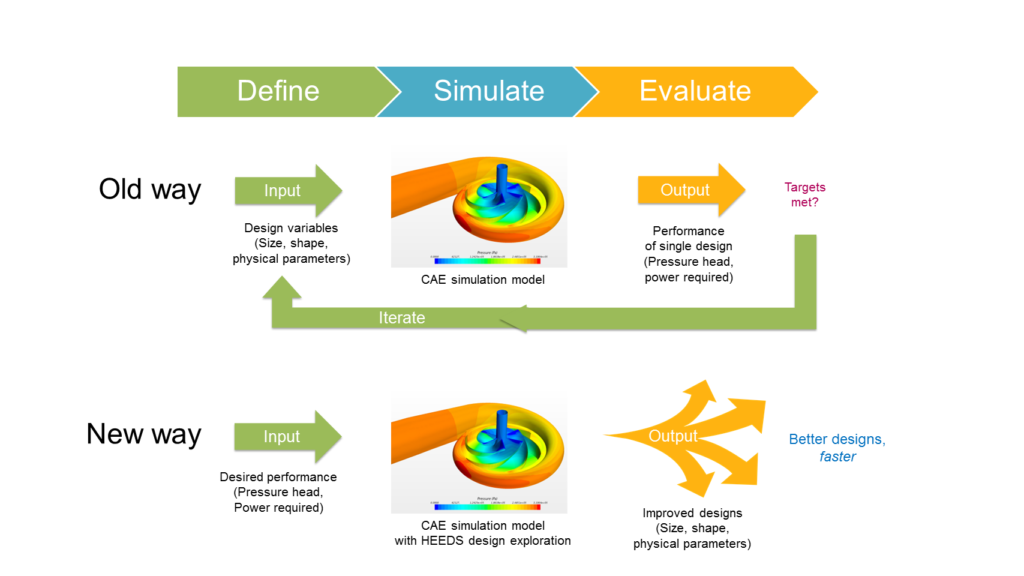Early last year we reviewed in this blog post eight megatrends in engineering modeling and simulation that dominate the thinking and decision-making of engineering organizations and their technology providers today, and that we believe will continue to do so well into the years ahead. We wrote then:
This second decade of the twenty-first century is witnessing an explosion of invention and innovation in digital engineering technologies unrivaled since the 1980s, when so many foundational tools and methods were either created or brought to practical fruition. Here are eight megatrends that we believe will drive generational leaps forward in engineering modeling and simulation technologies, methods and work processes through 2020 and well beyond:
- Simulation-led, systems-driven product development.
- Democratization of engineering modeling and simulation.
- Simulation app revolution.
- Design space exploration.
- Topology, materials and process optimization for additive manufacturing.
- Simulation for the Industrial IoT and Industry 4.0.
- Big-data analytics in simulation.
- Cloud HPC for simulation.
Now, here are six more large-scale trends that we think are already beginning to drive major technology developments and end-user investments aimed at fostering cost, schedule, quality, performance and innovation improvements in the engineering and production of discretely manufactured products (many will benefit process manufacturers and other AEC industry participants as well):
- 21st– century data management: Separate the data from the data model (Aras, Onshape, Frustum…).
- From PIDO to fully automated design space exploration: 20+ years of evolution—then a revolution.
- New requirements-management technologies that automatically link—via new systems-level engineering technologies—requirements fulfillment during the course of system-level product design (MapleSIM, Simulink…) back to digitally captured system requirements definitions (SysML, Rational Rhapsody…), and automatically track and report divergences and convergences between the two as the design evolves.
- Generative design design space exploration: What’s alike? What’s different? When is each appropriate?
- AI and ML (machine learning) in engineering modeling and simulation—the next steps beyond big-data analytics for simulation.
- Further breakthroughs in co-simulation: Simultaneous instead of step-wise simulation of multiple physical domains, and at multiple (mixed) fidelities—0D, 1D, 2D, 3D; also 4D and 5D in AEC.
Previews
21st– century data management
Aras’s insight to separate the data from the data model makes them, a bit ironically, the technology vendor that will relieve legacy PLM vendors of the prohibitive burden of somehow hoisting their SQL-based PDM offerings into the cloud, yet still link them into today’s truly “open” world. Because Aras’s technology architecture has already done it for them, before them.

And without charging a penny for the technology. Aras makes its software available as freeware. Users can download, evaluate, and implement it in production usage—all for zero dollars. If users then need customization and integration to link into their unique multi-application environments, Aras is available to do this, for fair and reasonable service fees. An extraordinarily apt 21st-century business model, we think.
From PIDO to fully automated design space exploration: 20+ years of evolution—then a revolution

This breakthrough was sparked by HEEDS from Red Cedar Technology, a paradigm-disrupting startup that commercialized university-developed technology under the leadership of Bob Ryan, and was subsequently acquired by Siemens PLM. HEEDS has set a new direction now being pursued by almost every major DSE technology provider.
Generative design vs. contemporary design space exploration
When early adopters of generative design technology discover what fully automated design space exploration technology can do, will they feel underserved by their generative-design technology providers putting forth tools that still require, today, an arguably unnecessary exertion of effort by engineers and designers in making decisions that the software should be making for them?
Or, instead, is generative design an entirely appropriate technology for disciplines and end-user markets where not all problems and sought-for outcomes can be expressed in an entirely determinative manner? The jury is still out on this one, we believe. After users gain more experience with both approaches—and with continuing maturation of both technology classes—time will tell.
Looking forward
Watching the answers to all these questions take shape is going to be fascinating. We greatly look forward to following and reporting here on these and many more game-changing technologies and trends as they unfold in the quarters and years to come. Stay tuned!
Selected background reading
MapleMBSE from Maplesoft radically expands accessibility of model-based systems engineering
CosiMate from Chiastek: Co-simulation conduit for multifidelity systems modeling

